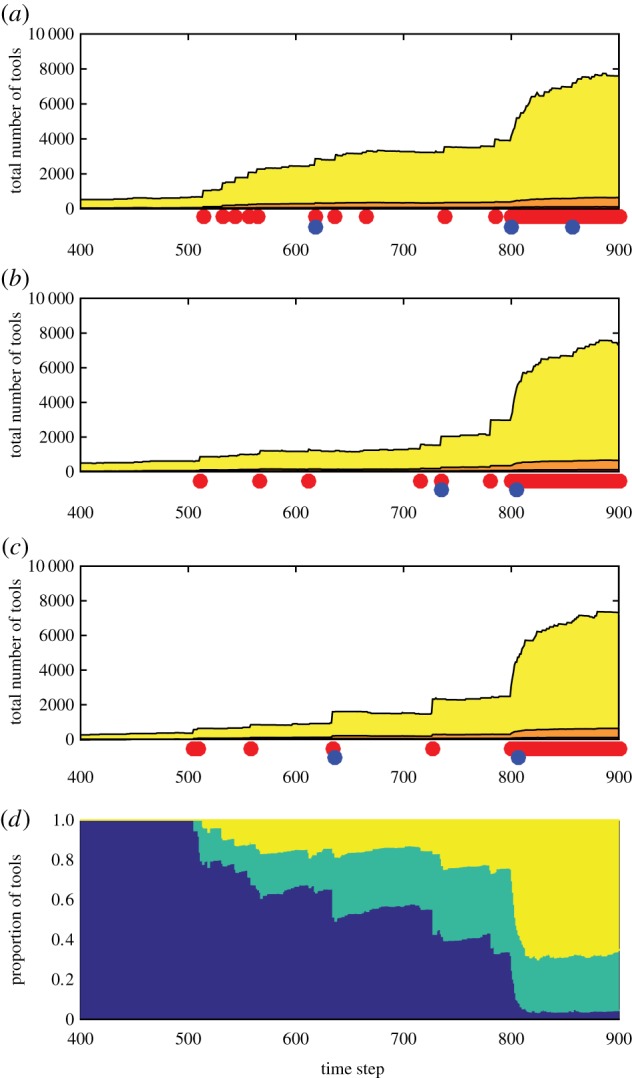Figure 5.

Co-development of partially connected populations. Panels (a–c) show cultural dynamics in three contemporaneous populations (N1 = N2 = N3 = 25; colour scheme as in previous figures). Panel (d) shows the fraction of cultural overlap of combination tools among populations: the mean fraction of tools in each population that are unique to that population (blue), the mean fraction of combination tools that are shared with one other population (cyan), and the mean fraction of combination tools that are common to all three populations (yellow). Each population's culture is unique (Pmigrate = 0) until t = 500, and cultural complexity is near steady state for long periods of time. From t = 500 to t = 800, Pmigrate = 0.0004. During this phase, partially coordinated cultural change occurs, while each population remains culturally distinct: migration events (red dots) drive punctuated increases in cultural complexity (each migrant introduces into the new population each of the core technologies from its original population with probability fmigrant = 0.3; the new combination tools that become possible drive the increase in cultural complexity), and inventions that increase biological carrying capacity spread quickly (blue dots, (a–c)). Overall repertoire sizes increase in all populations by similar orders of magnitude, while cultural overlap of combination tools increases gradually, but with a significant fraction of each population's repertoire remaining unique (d). At t = 800, Pmigrate is increased to 0.04. This more frequent migration leads to a state reminiscent of a single large population, driving overall cultural repertoire sizes upwards sharply (a–c) and effectively near-homogenizing the populations’ cultures (d). Other parameters (a–d): PIncreaseCarryingCapacity = 0.01, Plucky = 0.02, PSpontLoss = 0.02. Every increase in biological carrying capacity (blue dots) is by a factor of between 1.1 and 1.2, leading the populations to increase by the end of the simulation from N1 = N2 = N3 = 25 to N1 = 36, N2 = 39 and N3 = 32.
